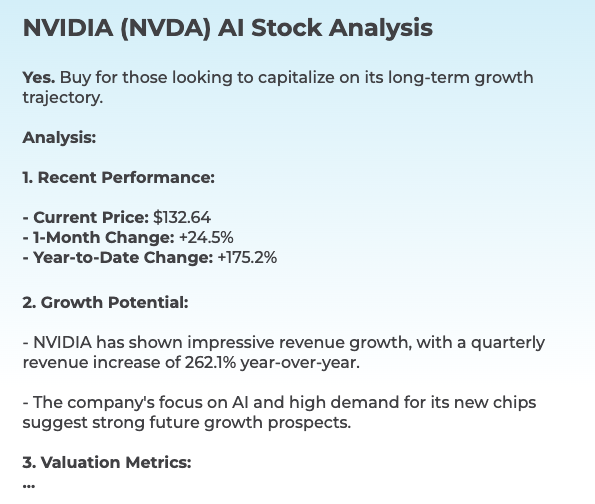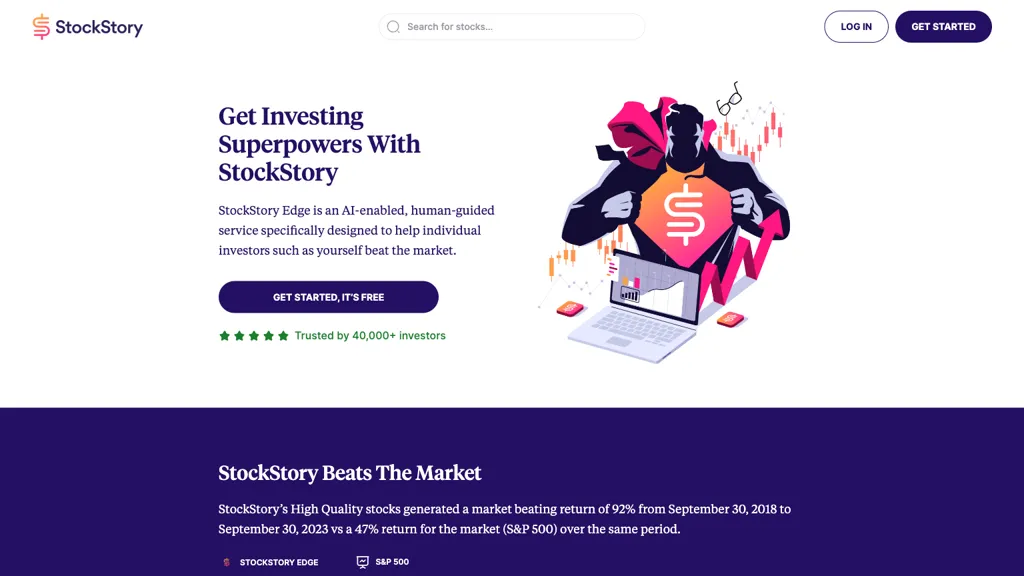For AI-driven trading and stock prediction platforms to deliver reliable and accurate insights, it is essential to assess the accuracy of their data sources. Poor data quality can result in inaccurate predictions, financial losses and a lack of trust in the platform. Here are 10 top tips for evaluating the quality data and the sources it comes from.
1. Verify data sources
Verify the source of the data: Ensure the platform uses reputable and well-known data providers (e.g., Bloomberg, Reuters, Morningstar, or exchanges such as NYSE, NASDAQ).
Transparency. The platform should clearly disclose the data sources it utilizes and should be able to update these regularly.
Beware of dependence on one source: Trustworthy platforms combine data from multiple sources in order to reduce biases and errors.
2. Examine the freshness of data
Do you have real-time or delayed data Check if the platform is able to provide delayed or real-time data. Real-time trading demands real-time data, whereas delayed data is sufficient for long-term analysis.
Check the frequency of updating information (e.g. hourly, minute by minute or daily).
Accuracy of historical data: Make sure that the information is accurate and constant.
3. Evaluate Data Completeness
Check for missing or inaccurate information.
Coverage: Ensure that the trading platform supports many indexes and stocks that are that are relevant to your strategy.
Corporate actions: Find out if your platform is able to take into account dividends and stock splits in addition to mergers and other corporate events.
4. Test Data Accuracy
Cross-verify your data: Check the data on your platform against other trustworthy sources.
Error detection: Look out for a mismatch in pricing, incorrect financial metrics or outliers.
Backtesting. You can test strategies by using data from the past and compare the results with the results you were expecting.
5. Review the data's Granularity
Detail The platform offers granular data like intraday price and volume, spreads, bid and offer, and depth of order book.
Financial metrics: Make sure the platform has detailed financial statements such as income statement, balance sheet and cash flow. Also, check if it includes key ratios like P/E (P/B), ROE (return on equity) etc. ).
6. Check for Data Cleansing and Preprocessing
Data normalization. Make sure that the platform is normalizing the data to ensure consistency (e.g. by changing dividends, splits).
Outlier handling - Check out the way your platform handles anomalies, or data that is outliers.
Incorrect data: Determine whether the platform has reliable techniques to fill in gaps data points.
7. Verify data consistency
Aligning data to the time zone: To avoid any discrepancies make sure that all data is synced with one another.
Format consistency: Ensure that the information has been presented consistently (e.g. units, currency).
Verify that the data is consistent across markets: Compare data from various exchanges or markets.
8. Determine the relevancy of data
Relevance of the data to your trading strategy: Ensure that the data is aligned with your trading style.
Review the features available on the platform.
Verify the security and integrity of data
Data encryption: Check that the platform utilizes encryption to secure data as it is transmitted and stored.
Tamper-proofing (proof against tampering): Check to make sure that the information was not altered or altered by the computer.
Check for compliance: The platform should comply with the data protection regulations.
10. Transparency Model for AI Platform Tested
Explainability: Ensure the platform offers insight into how the AI model uses the data to make predictions.
Bias detection - Check to see if your platform actively monitors data and models for biases.
Performance metrics - Assess the platform's track record and performance indicators (e.g. : accuracy, accuracy, and recall) to assess the reliability of their predictions.
Bonus Tips
Reputation and feedback from users: Review user reviews and feedback to assess the credibility of the platform.
Trial period: You are able to test the data quality and features of a platform by using the demo or trial before deciding to purchase.
Support for customers: Make sure the platform offers robust customer support for issues with data.
Following these tips will enable you to analyze the data quality, sources, and accuracy of AI-based stock prediction platforms. See the most popular inciteai.com AI stock app for website examples including ai trading tools, ai for investment, ai stock picker, ai investing app, ai for trading, ai stock picker, ai for investing, ai stock trading app, investment ai, using ai to trade stocks and more.

Top 10 Ways To Evaluate The Scalability Ai Analysis Of Trading Platforms And Stock Prediction
Analyzing the scalability of AI-driven stock prediction and trading platforms is crucial for ensuring they can handle increasing data volumes, user demands as well as market complexities. These are the top ten ways to determine the capacity of these platforms.
1. Evaluate Data Handling Capacity
TIP: Ensure that the platform has the capacity to process and analyze large databases.
What is the reason? Scalable platforms should be able to handle the growing amounts of data with no loss.
2. Test Real-Time Processor Capabilities
Check out the platform to determine how it handles data streams in real time like breaking news or live price updates.
Reason trading decisions are taken in real-time, and delays could lead traders to miss opportunities.
3. Cloud Infrastructure Elasticity and Check
Tips - Find out if a platform is using cloud infrastructure, e.g. AWS or Google Cloud.
Why? Cloud platforms are elastic, and can be scalable up or down according to demands.
4. Evaluate Algorithm Efficiency
Tip : Check the computational efficacy and accuracy of AI models for predictions.
Why: Complex algorithms can be resource-intensive, and optimizing them is essential to scaling.
5. Study parallel processing and distributed computing
Make sure the platform is using distributed computing or parallel computing frameworks.
What's the reason? These technologies allow for faster analysis of data and processing on multiple nodes.
Review API Integration.
TIP: Examine the platform's integration with external APIs.
Why: Seamless integration ensures the platform can adapt to the changing information sources and environments for trading.
7. Analyze User Load Handling
Tip: Simulate the impact of high user traffic to see how the platform does under pressure.
Why? A scalable platform must maintain performance, even when users grow.
8. Evaluate Model Retraining and Adaptability
Tip Assess how frequently the AI models can be trained with new data.
Why? Markets are constantly changing, and models need to adapt quickly in order to remain accurate.
9. Examine for fault tolerance and Redundancy
Tips. Make sure that your platform has failover mechanisms and redundancy to handle hardware or software problems.
The reason trading can be costly So fault tolerance and scalability are essential.
10. Monitor Cost Efficiency
Tips: Think about the costs of scaling up your platform. Take into account cloud resources, such as storage of data as well as computing power.
Why: The price of scalability shouldn't be unsustainable. So, it's crucial to find a balance between performance and cost.
Bonus Tip: Future Proofing
Ensure the platform is built to take advantage of new technologies (e.g., quantum computing or advanced NLP) and to adapt to changes in the regulatory environment.
If you focus your attention on these aspects, you can accurately assess the scalability AI prediction as well as trading platforms. This ensures that they are robust and efficient as well as ready for further expansion. Follow the top breaking news for blog advice including ai stock analysis, how to use ai for stock trading, investing with ai, best ai stocks, ai for trading stocks, ai share trading, stock trading ai, investing with ai, ai stock predictions, can ai predict stock market and more.
